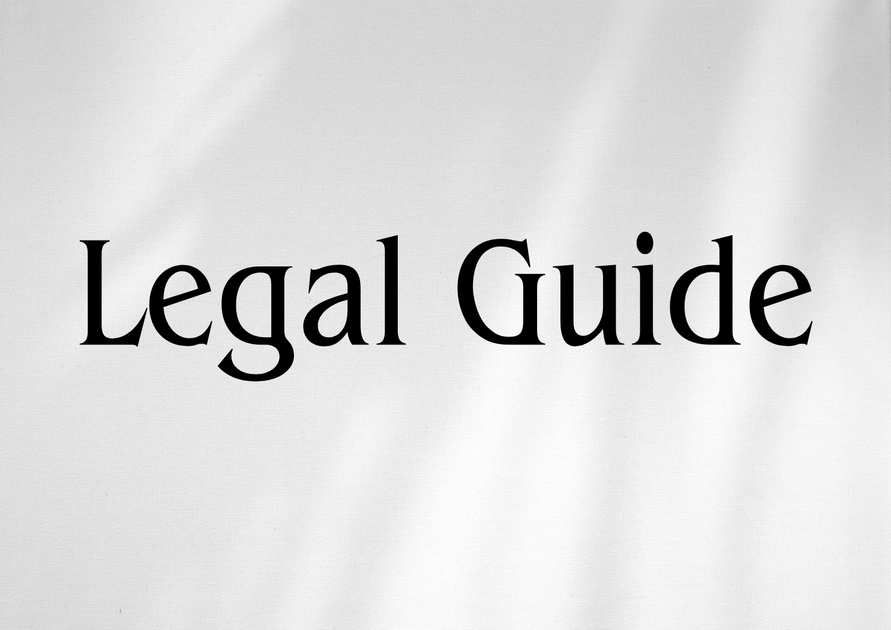Introduction: Navigating the Evolving Landscape of UAE Civil Aviation Law
The United Arab Emirates’ (UAE) civil aviation sector stands as a symbol of modernization and economic dynamism both regionally and globally. As a leading international hub, the UAE’s proactive approach to aviation regulation—anchored by its robust Civil Aviation Authority—underpins its safety, security, operational efficiency, and legal compliance. In 2025, a series of regulatory updates and strategic policy shifts are reshaping the way operators, investors, and ancillary service providers interact with aviation law in the UAE.
This comprehensive legal analysis examines the structure, statutory mandate, and regulatory mechanisms of the UAE Civil Aviation Authority (GCAA), with a focus on recent legal developments, particularly under Federal Law No. (20) of 1991 (as amended) and new policies effective as of 2025. It is tailored for clients—ranging from airlines and aviation service businesses to HR managers and legal practitioners—offering not just definitions but actionable professional insights, risk analyses, compliance strategies, and case study applications for operations in the civil aviation sector.
Table of Contents
- UAE Civil Aviation Authority Overview: Legal Foundation and Evolution
- Authority Structure and Main Functions
- Legal Mandates and Powers: Understanding Federal Law No. (20) of 1991 and Recent Updates
- Governance and Compliance Mechanisms
- Enforcement Actions and Risks of Non-Compliance
- Recent Legal Updates and Key Developments in 2025
- Comparison Table: Old Law vs. New Regulations
- Case Studies and Practical Impacts
- Compliance Best Practices and Practical Strategies
- Conclusion and Future Outlook
UAE Civil Aviation Authority Overview: Legal Foundation and Evolution
Legal Genesis and Authority
The General Civil Aviation Authority (GCAA) was established in accordance with Federal Law No. (4) of 1996, further detailed by Federal Law No. (20) of 1991 Regarding the Organisation of Civil Aviation. Over time, this groundwork evolved through ministerial directives, cabinet resolutions, and executive regulations clarifying its scope.
The Authority functions under the oversight of the UAE Ministry of Economy and coordinates with the Supreme Council for National Security, particularly for airspace management and transportation security. Legally, the GCAA’s powers interface with local aviation departments at the emirate level (“Local Competent Authorities”), but its federal regulatory authority prevails whenever federal aviation interests are at stake.
Why Is the GCAA Relevant in 2025?
Ongoing global challenges—ranging from advances in unmanned aircraft, evolving safety and security demands, and stringent international obligations—require the GCAA’s legal and procedural framework to adapt swiftly. For stakeholders, compliance is now a deeply strategic concern, with non-compliance risking license revocation, significant penalties, and reputational harm.
Authority Structure and Main Functions
Organizational Structure
The GCAA’s structure reflects a modern regulatory agency, composed of:
- Board of Directors – Sets primary policies and oversees major regulatory actions.
- Director General – Executes policy, manages regulatory activity, and serves as the public authority’s representative.
- Key Departments:
- Safety Affairs
- Air Navigation and Flight Operations
- Security and Facilitation
- Legal and Regulatory Affairs
- Licensing and Permits
Diagram Suggestion: Insert flowchart illustrating GCAA’s hierarchical structure from Board to operational departments.
Primary Functions
Under Federal Law No. (20) of 1991 and subsequent regulations, the GCAA’s core duties include:
- Licensing, regulation, and supervision of all civil aviation activities (airlines, airports, cargo, MRO providers, etc.).
- Drafting executive by-laws and technical standards.
- Overseeing airworthiness certifications and safety inspections.
- Investigating incidents, enforcing compliance, and managing sanctions.
- Coordinating with ICAO (International Civil Aviation Organization) and international partners.
Legal Mandates and Powers: Understanding Federal Law No. (20) of 1991 and Recent Updates
Key Statutory Foundations
Federal Law No. (20) of 1991, as the foundational statute, was designed to:
- Regulate all aspects of civil aviation, including flight safety, airspace control, security, and environmental standards.
- Authorize the GCAA to issue, amend, suspend, or revoke licenses and certificates for aviation operators and professionals.
- Establish a legal framework for accident investigation, liability, and dispute handling.
- Mandate harmonization with international conventions (notably, the Chicago Convention and its Annexes).
Recent Legal Updates: Notable is Cabinet Decision No. (2) of 2022 & regulatory circulars issued in 2023 and 2024, which empower GCAA to address modern aviation issues—especially drones (unmanned aerial vehicles), cyber-security protocols, and passenger rights.
New Legal Powers in 2025: Summary
- Expanded Enforcement Authority – GCAA inspectors may now issue binding orders and impose administrative fines directly (Cabinet Decision No. 5 of 2025).
- Technology Regulation – Explicit powers were introduced for regulating autonomous and remotely piloted aircraft across the UAE’s civilian airspace.
- Environmental Compliance – Enhanced standards on emission tracking and noise pollution, with cross-agency collaboration (see Federal Decree-Law No. 24 of 2023).
- Data and Cybersecurity – More stringent controls on digital aviation systems, incident reporting, and cooperation with the National Cybersecurity Council.
Authority’s Limitations and Scope
Despite wide-ranging powers, the GCAA must coordinate with:
- Emirate-level aviation authorities for airport management.
- The Ministry of Defence for military/civilian coordination.
- The UAE Ministry of Justice for prosecutorial referrals when administrative sanctions escalate to criminal liability.
Governance and Compliance Mechanisms
Licensing and Regulatory Approvals
All commercial and non-commercial aviation activities require licenses issued by the GCAA, which must be renewed periodically and strictly conform with UAE’s executive by-laws.
Operators must demonstrate:
- Technical competence and qualified personnel.
- Robust safety management and emergency procedures.
- Insurance coverage consistent with UAE law (see Ministerial Resolution No. 34 of 2021).
Monitoring, Audits, and Self-Reporting
The GCAA mandates periodic safety audits, operational reporting, and self-assessments. Digital systems implemented since 2023 enable streamlined online submissions via the GCAA’s eService portal.
Consultant Insight: Proactive self-reporting of non-compliance, coupled with prompt remediation plans, significantly reduces the risk of license suspension or heavy fines.
Stakeholder Engagement and Public Consultation
Recent amendments require the GCAA to conduct stakeholder feedback sessions prior to major regulatory changes—a progressive alignment with international best practice. Active participation improves industry buy-in and helps operators anticipate impending compliance needs.
Enforcement Actions and Risks of Non-Compliance
Administrative Sanctions
The GCAA leverages a range of administrative enforcement tools, including:
- Warning letters and compliance improvement notices.
- Suspension or revocation of operator licenses.
- Direct fines for regulatory breaches (as per Cabinet Decision No. 5 of 2025).
- Mandatory remedial training and systems upgrades.
| Compliance Breach | Pre-2025 Penalty | 2025 Penalty |
|---|---|---|
| Unlicensed drone operations | Warning, up to AED 20,000 fine | Administrative fine up to AED 100,000; confiscation |
| Passenger rights violation | Advisory warning | Mandatory compensation, up to AED 50,000 fine |
| Data protection failure | N/A | Fine up to AED 250,000; regulatory audit |
Judicial Escalation
Larger-scale or repeated violations may result in criminal referral to the UAE Public Prosecution pursuant to the Federal Penal Code or relevant sectoral laws (including cybercrime, terrorism, and public safety statutes).
Risks to Stakeholders
- Operational Disruption: Temporary grounding or license suspension can halt business activities.
- Financial Loss: Increased fines and cost of compliance post-2025.
- Reputational Harm: Regulatory actions are increasingly being published for public transparency.
Recent Legal Updates and Key Developments in 2025
Summary of Key Amendments
- Drone Regulations: Full registration and operator licensing introduced for commercial drone operators. Unauthorized drone flights over restricted areas subject to enhanced penalties.
- Passenger Rights: New guidelines and compensation frameworks for customer complaints, denied boarding, and flight delays.
- Emissions Monitoring: New requirements for aircraft operators to report emissions, noise levels, and adopt mitigation strategies.
- Digital Operations: Stricter cybersecurity audits, mandatory reporting of security incidents, and third-party data processor requirements.
Reference to Official Sources
All amendments and regulatory circulars are accessible via the UAE GCAA Portal, the Federal Legal Gazette, the UAE Government Portal, and periodic notices from the Ministry of Justice.
Comparison Table: Old Law vs. New Regulations
| Area of Regulation | Pre-2025 | 2025 and Beyond |
|---|---|---|
| Drone Operation | Permitted but loosely regulated | Full licensing, registration, and penalties for non-compliance |
| Cybersecurity | General IT standards | Specific aviation cybersecurity protocols, incident disclosure required |
| Environmental Emissions | Reporting voluntary | Mandatory monitoring and reporting, penalties for excessive emissions |
| Passenger Compensation | Discretionary | Outlined legal minimums per incident category |
| Direct Administrative Fines | Enforcement through courts | GCAA empowered to impose fines directly |
Case Studies and Practical Impacts
Case Study 1: Commercial Drone Operator in Abu Dhabi
Scenario: A construction tech firm begins drone-based site surveys without the updated 2025 regulatory permit. GCAA enforcement officers issue an immediate administrative fine and confiscate drones. The firm faces business disruption, customer dissatisfaction, and reputational risk. Prompt legal consultation and compliance remediation were necessary to restore operations.
Consultancy Guidance: Any technological adoption (including drones, AI systems, IoT) should be preceded by legal risk assessment and licensing confirmation with the GCAA.
Case Study 2: International Airline Cybersecurity Incident
Scenario: An international airline permitted a third-party vendor access to its passenger data. Following a suspected data breach, GCAA cybersecurity inspectors conducted an in-depth review and issued a corrective action order under 2025 rules. The airline was subject to a fine and required to upgrade systems and staff training.
Consultancy Guidance: Due diligence on IT vendors, alignment with national cybersecurity protocols, and staff training are vital compliance steps to mitigate both financial and reputational risks.
Compliance Best Practices and Practical Strategies
Legal Advisory Recommendations
- Robust Licensing Management: Regularly review licensing requirements for all aviation operations, especially for technology initiatives (drones, digital operations).
- Continuous Compliance Audits: Integrate GCAA ePortals and reporting timelines into operational workflows; document all compliance actions and self-declarations.
- Proactive Stakeholder Engagement: Participate in GCAA’s public consultations. This early engagement informs strategy and demonstrates good faith to regulators.
- Incident Response Protocols: Develop and periodically test incident response plans for security, safety, or environmental incidents. Immediate transparent reporting is often favorably considered by enforcement officers.
- Training and Capacity Building: Ensure that personnel are up-to-date with latest regulatory standards via GCAA-accredited continuing professional development programs.
Checklist Suggestion: Insert a graphic compliance checklist summarizing renewal dates, reporting obligations, and investigation protocols.
Risk Mitigation Strategies
- Establish a compliance team or designate a compliance officer to oversee regulatory developments and ensure timely filings.
- Use GCAA’s digital tools to monitor updates and submit regulatory reports.
- For foreign operators, stay abreast of both national and emirate-specific regulations to avoid overlaps or contradictory practices.
Conclusion and Future Outlook
2025 is a transformative year for UAE aviation law, with the Civil Aviation Authority at the forefront of regulatory modernization. Expanded direct enforcement powers, targeted regulation of emerging technologies, integrated environmental compliance, and updated passenger rights all signal a maturing legal environment. Businesses should treat legal compliance as an operational priority, not a mere tick-box exercise. Investing in legal risk assessments, compliance monitoring, and proactive engagement will ensure sustainability, operational continuity, and competitive advantage in the evolving UAE aviation market.
Key Takeaway: The evolving structure and powers of the GCAA present both opportunities and risks. Legal compliance is not static; it demands ongoing vigilance, adaptation, and expert consultation. Forward-thinking organizations will proactively align their policies and systems with GCAA requirements to secure their place in the UAE’s ambitious aviation ecosystem for years to come.



